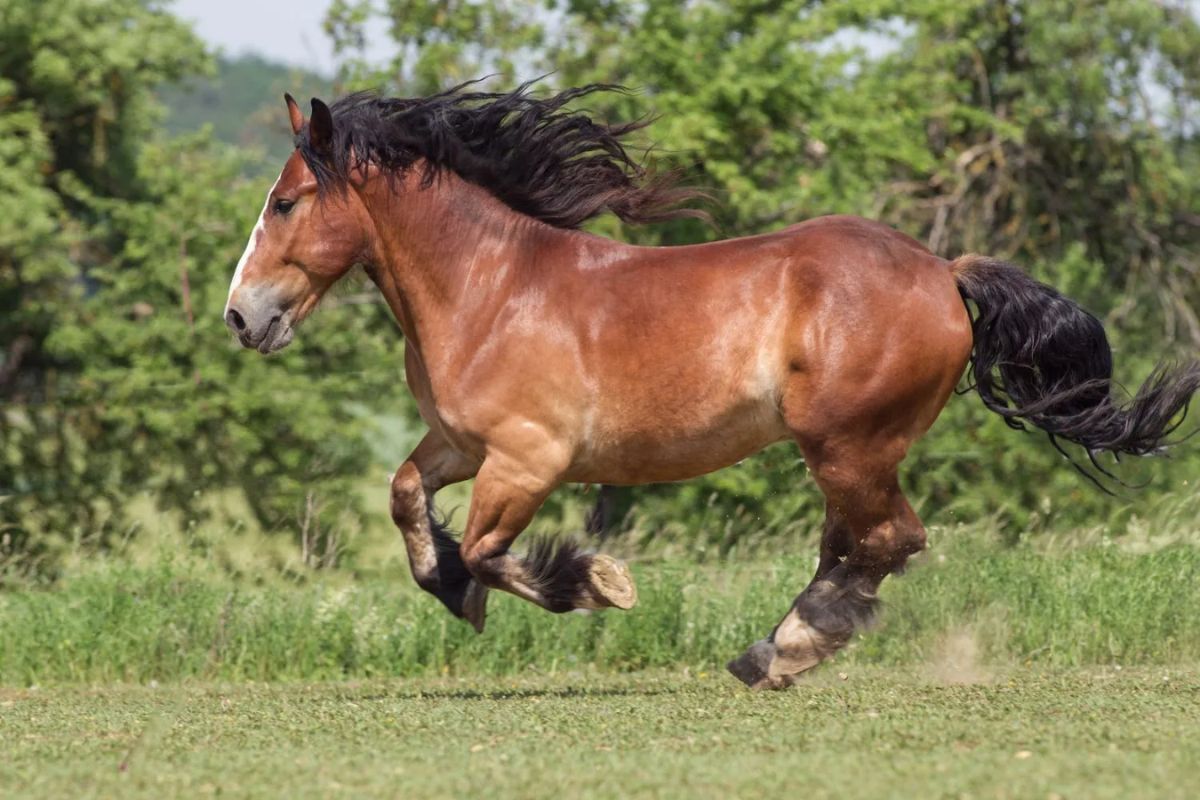Menu

France is certainly no newcomer to horses and breeding. Breeds like the Percheron, Camargue, and the modern Selle Français are evidence that the French have kept horses for many different purposes for centuries. In Brittany, in the northwestern part of France, there was a particular agricultural horse. And in the Middle Ages, that kind of horse was especially in demand. Yes, the French Breton was a strong horse, but strong horses were nothing new. What made the Breton popular was its comfortable gait.
And when the time came for the Crusades, it suddenly became important that one could sit on a horse for longer periods of time - not just that it was a strong horse. However, horsepower was still important, as the Crusaders' horses had to carry not only armor but also war booty home to France from the Holy Land. Part of the war booty was to become new, exotic horse breeds, and they were crossed with the Breton. The addition of oriental blood would go on to create two different lines within the breed.
Read also: Andalusian Horses: Classic and Splendid
This resulted in the Sommier horse, whose strength made it very good as a packhorse. It was enduring and had a calm temperament - very suitable for agriculture, where it was used, among other things, to collect seaweed for fertilizer from Brittany's coastline. The other branch is called Roissin, which was an even better warhorse than its ancestor; the Breton. Medieval soldiers on horseback had to travel far and wide - both inside and outside the country's borders. Endurance was therefore a requirement, and the Breton could now do even better than before.
During the 18th century, both the Sommier and Roussin lines were crossed with other pedigrees. Both the Ardennes, Percheron, and Boulonnais were to make their own mark on the breed. This created a heavier and stronger Breton: the Great Breton - which today is also called Trait Breton. Now it could be used for the most demanding agricultural work. In the next century, the breed was renewed again when English horse breeds were introduced. Both the Norfolk Roadster and the Hackney horse were to give the Breton a more elegant appearance. This line was now called the Postier Breton.
Now it was fine-tuned again for the new tasks in the military, where the same horse could take part in everything from transportation to carpentry.
Read also: Konik: Small Horse in Polish
The Breton has a quite square head with a broad forehead and prominent, strong jaws. It has short ears and small clear, friendly eyes. The neck is short and robust, the shoulders are short, powerful, and muscular. The back is balanced with a slight sway. The Great Breton has notably powerful legs, while the Postier line is slightly smaller and lighter in comparison. The color is usually red roan, but brown and red also occur. The height of a Breton is between 153 and 165, with the Great Breton in the upper range.
Whether you are dealing with a Postier or a Great Breton, you have a horse with a special calm demeanor. It is a breed with an innate willingness to work, bred to be ridden or driven over long distances. A Breton also enjoys people and is ready for new challenges - both when the road leads through unfamiliar terrain or if agriculture brings new tasks.
It should be mentioned that a third line - the so-called Corlay Breton - is also recognized within the same breed. This is the result of crossing with thoroughbred horses and Arabians. It is both smaller and bears a visible mark from both crosses. This particular line is considered by many to be "the true Breton" - that is, the direct successor to the medieval version of the proud French Breton.
Perhaps because some believed that the Thoroughbred and Arabian brought only good things to a breed that was a bit rough around the edges. Or maybe it's because the French today have a hard time admitting that England once added something really good to this wonderful horse. Either way, the Breton remains a versatile and beloved breed, with a rich history and many talents.
Read also: Maremmana: The Calm and Intelligent